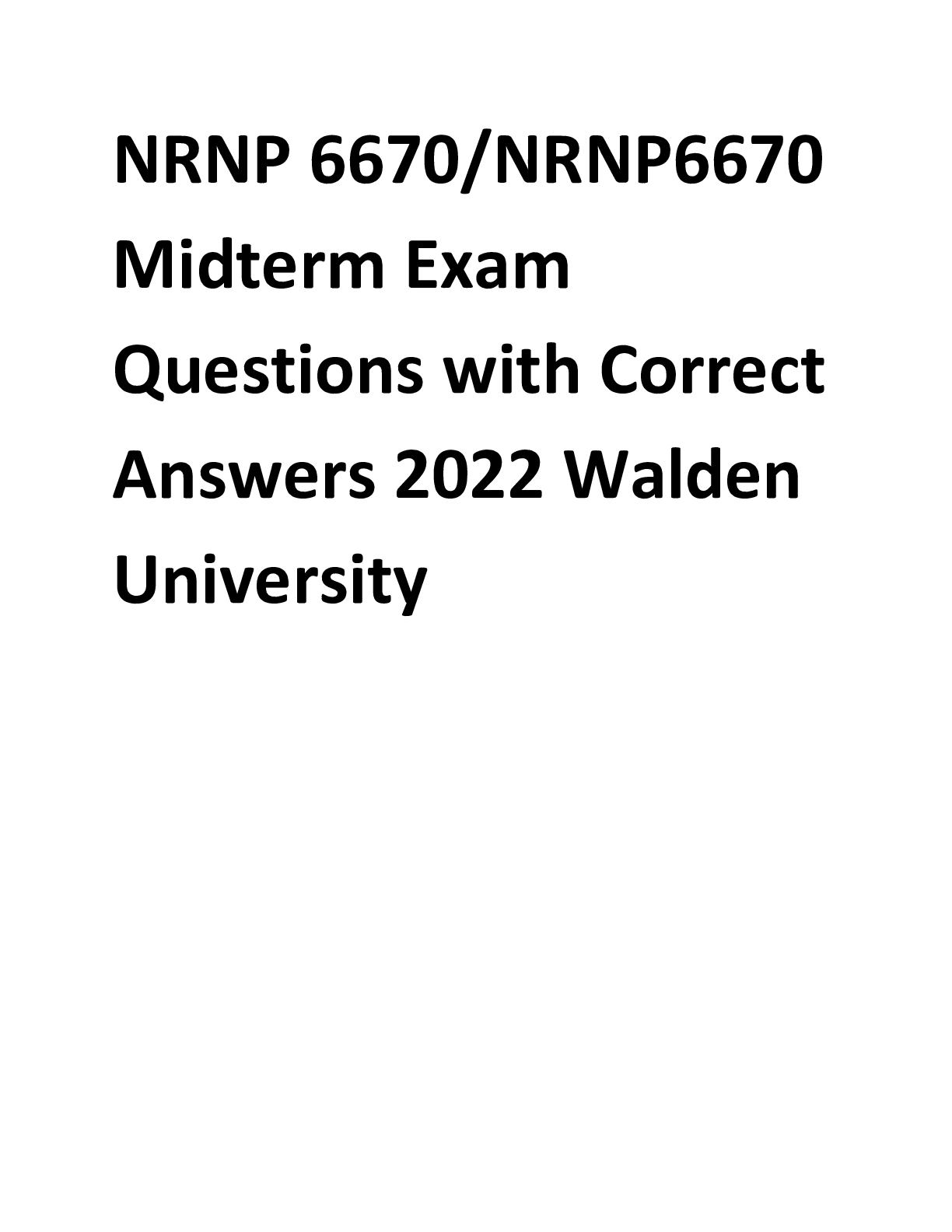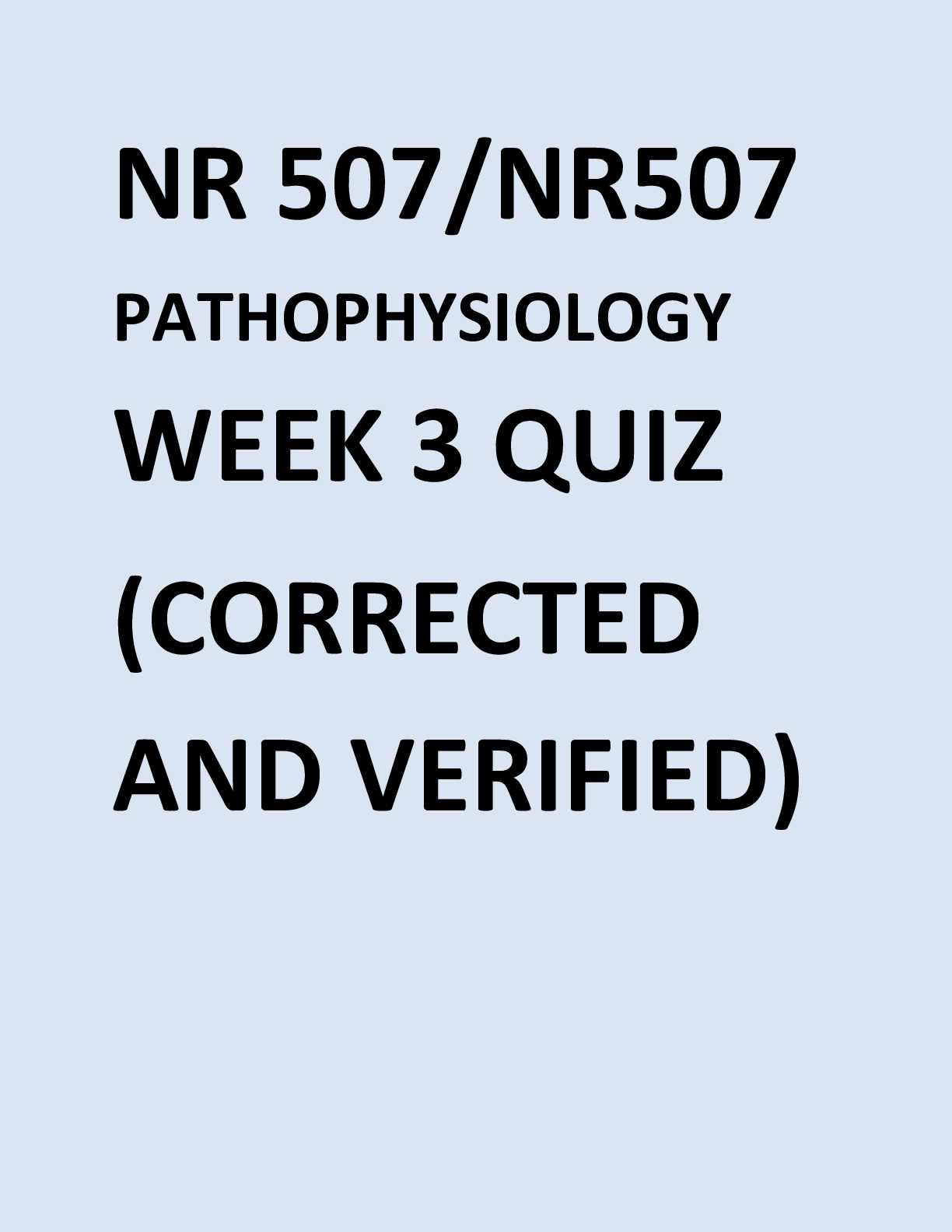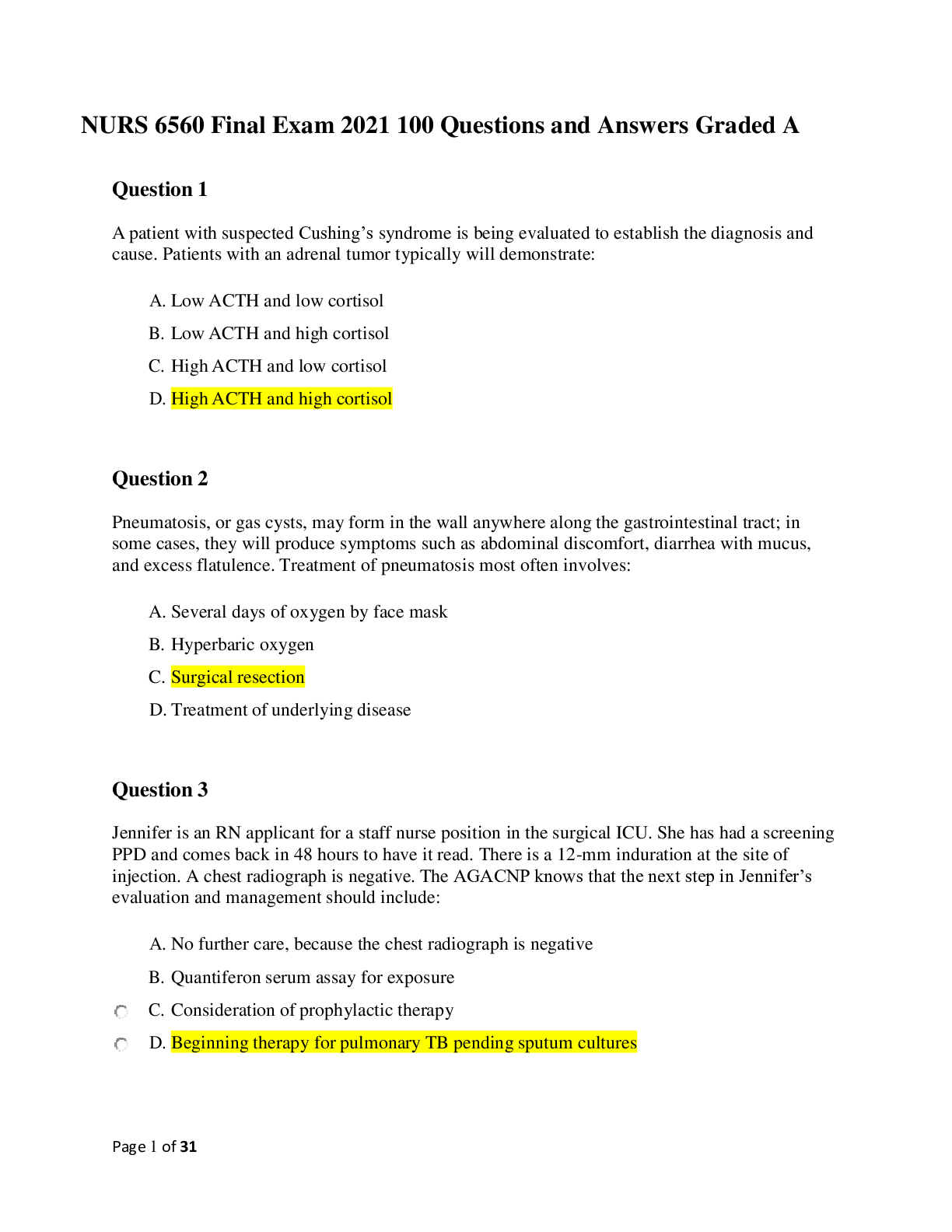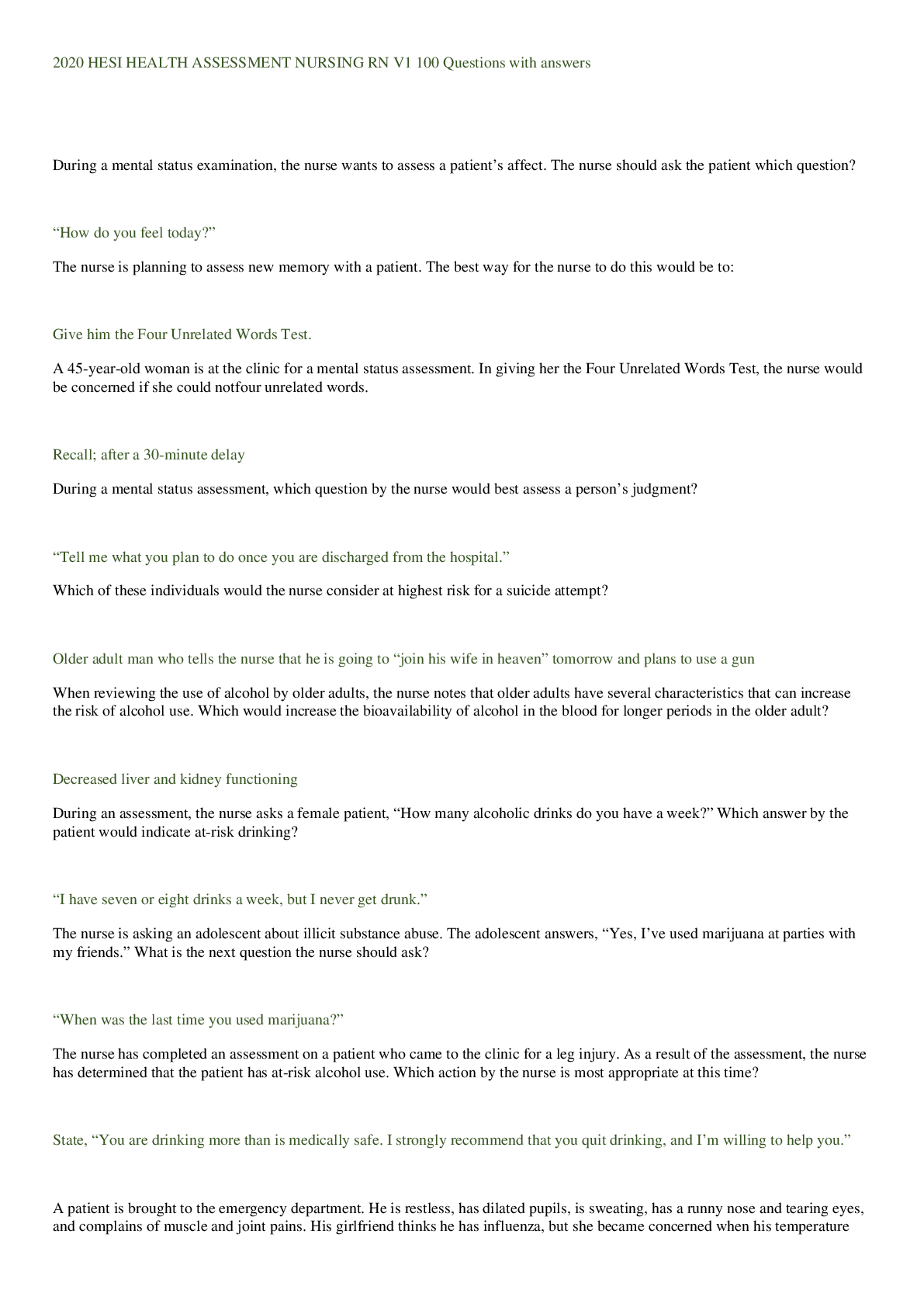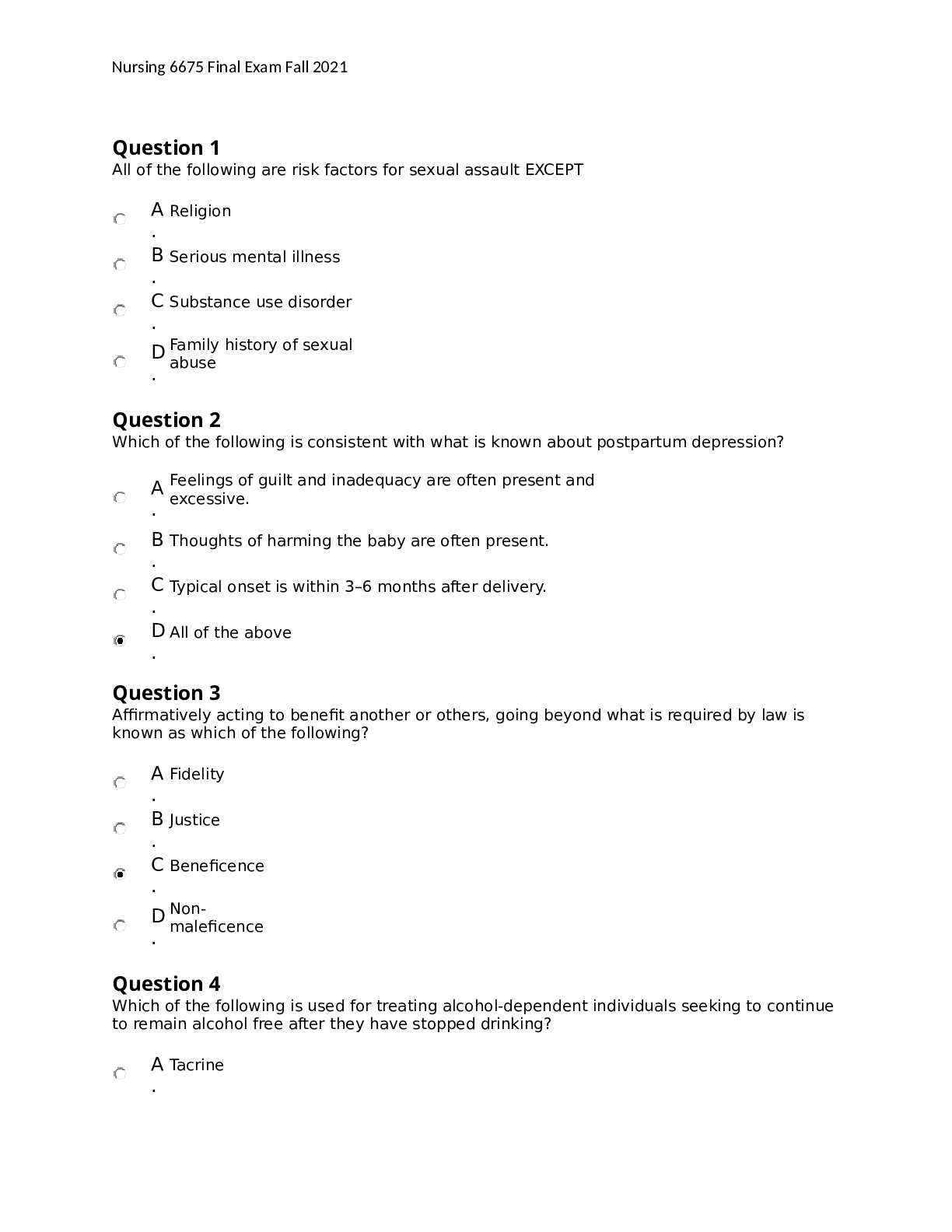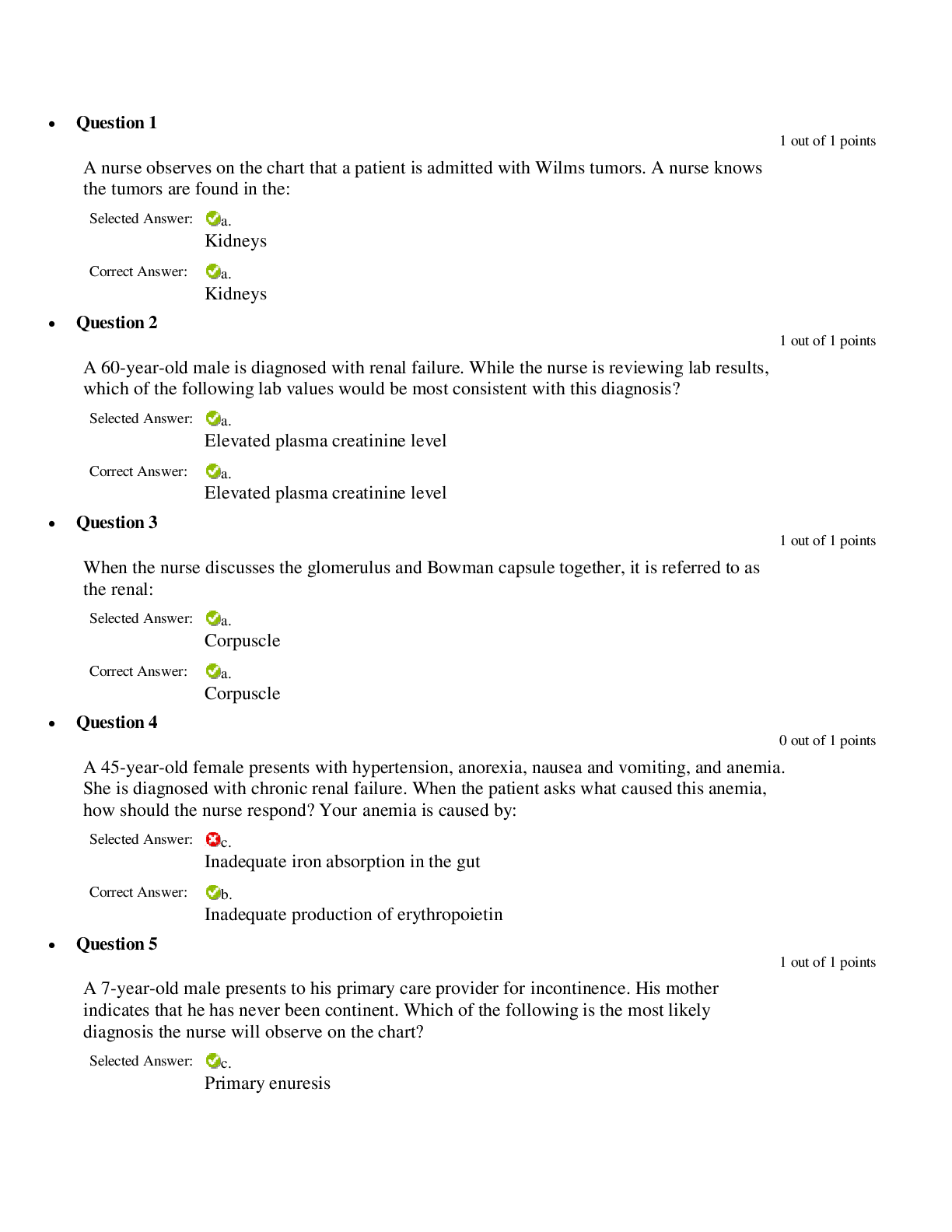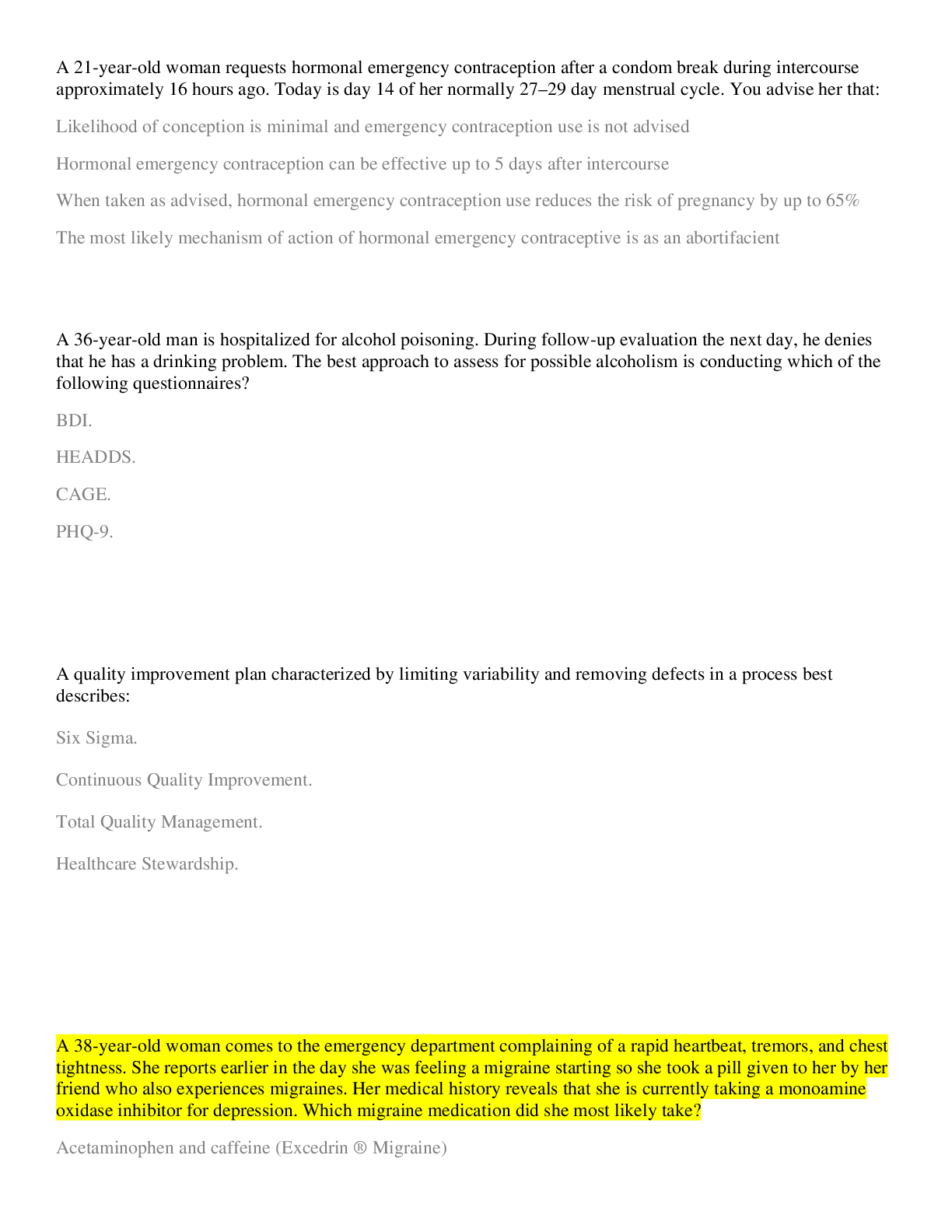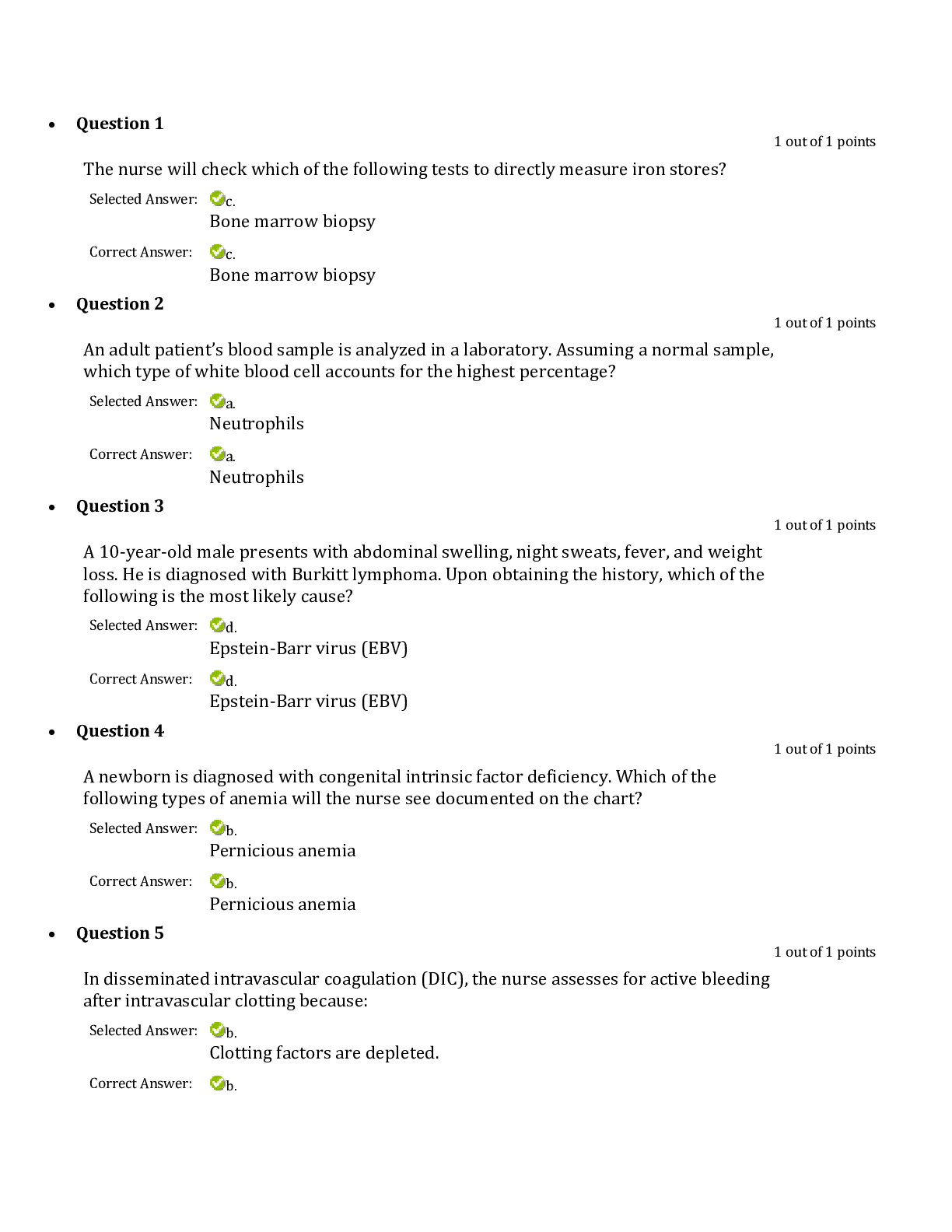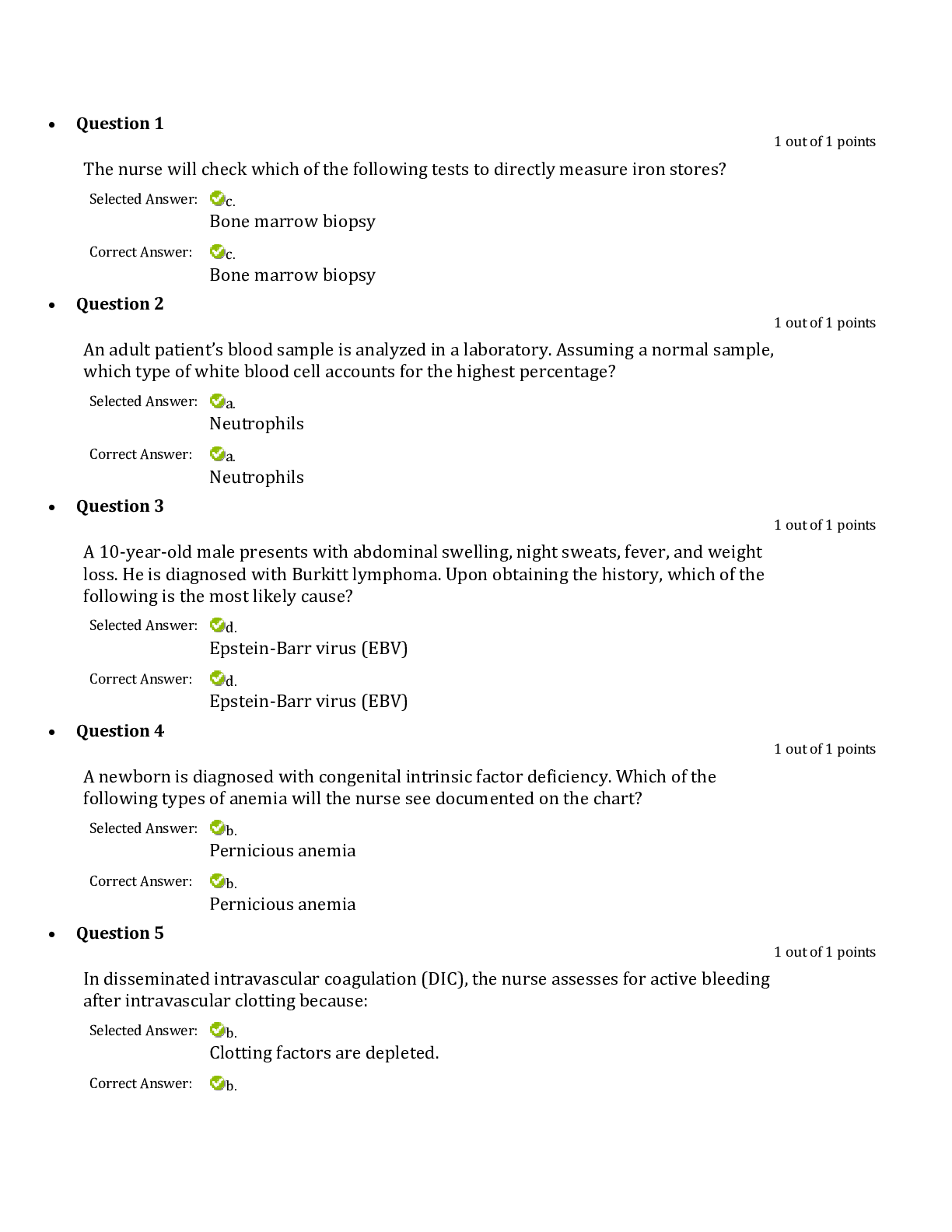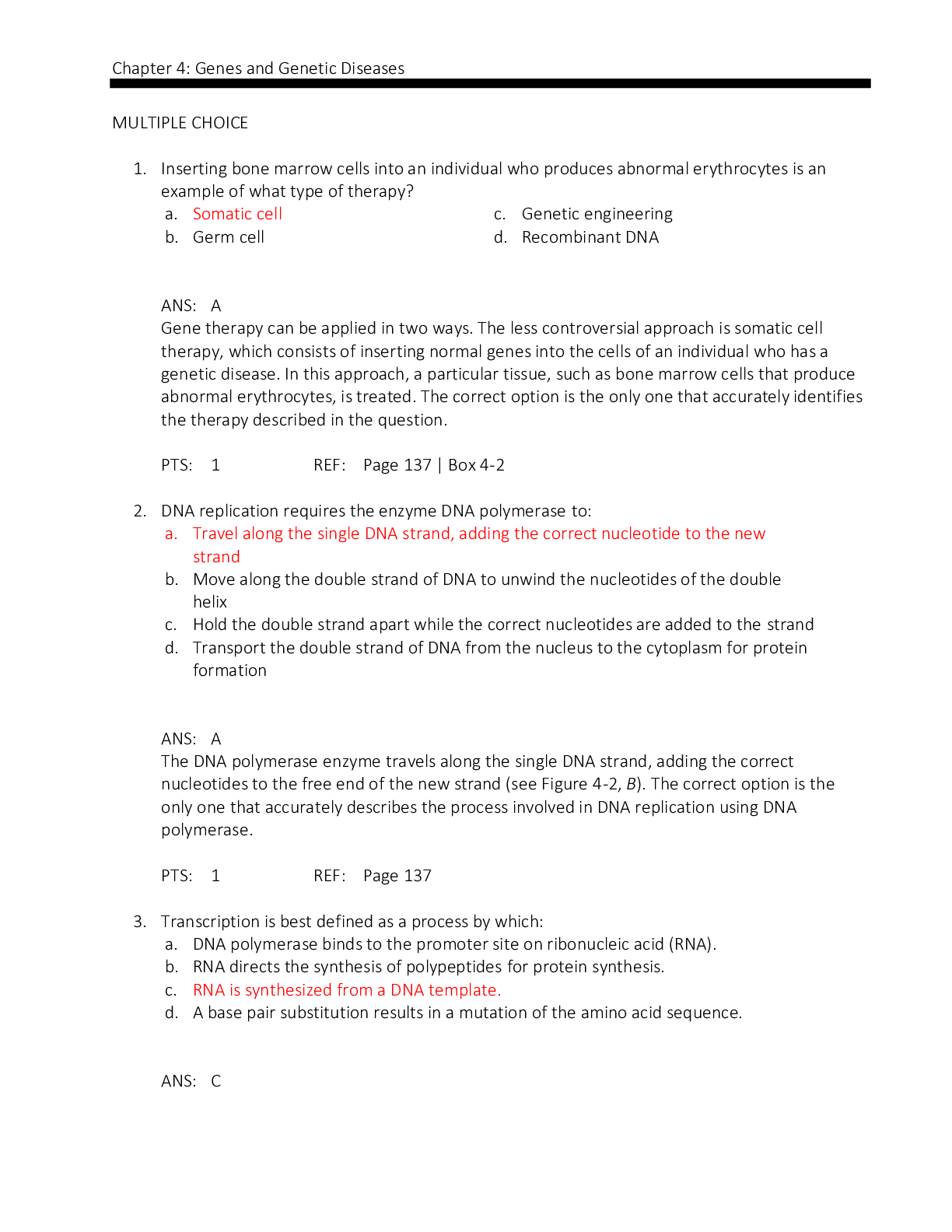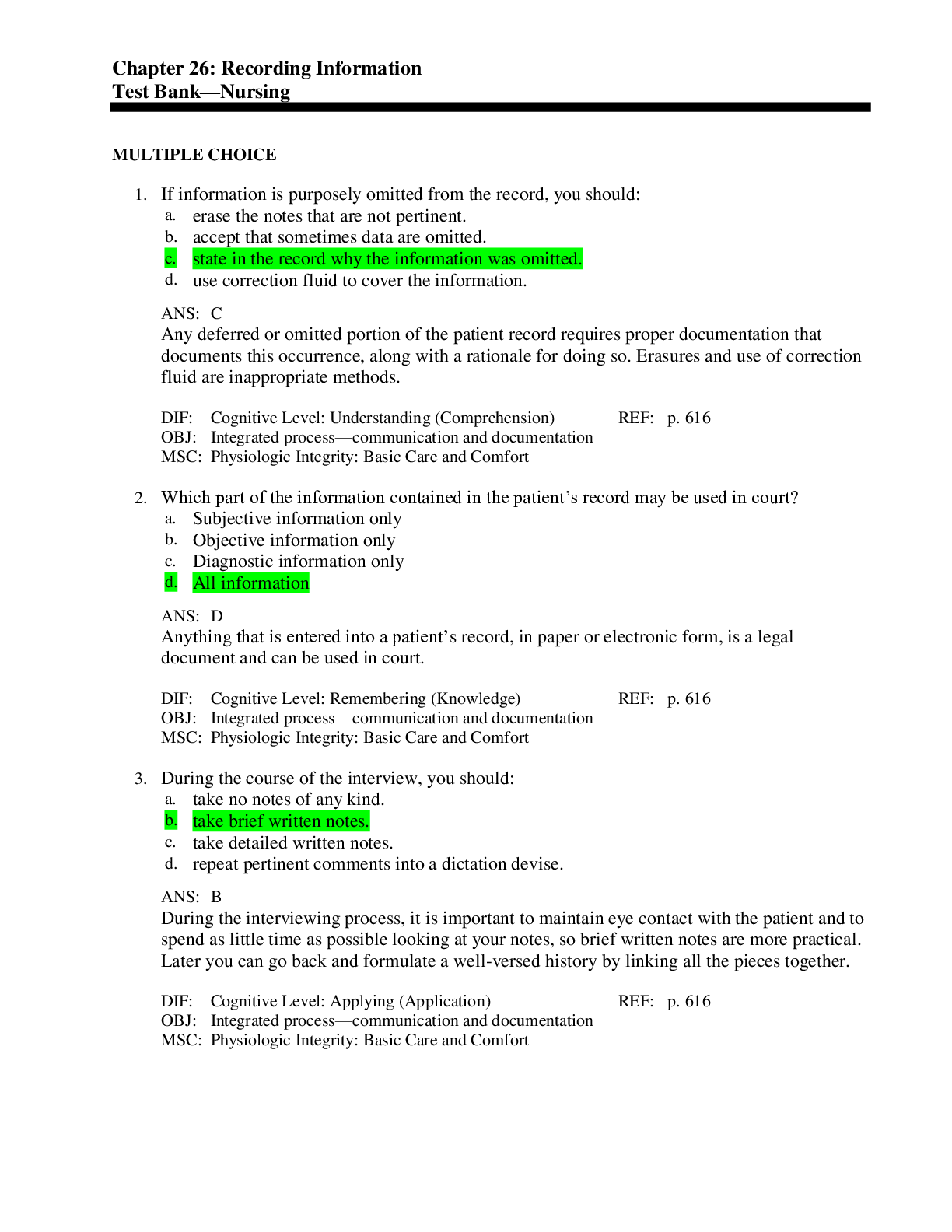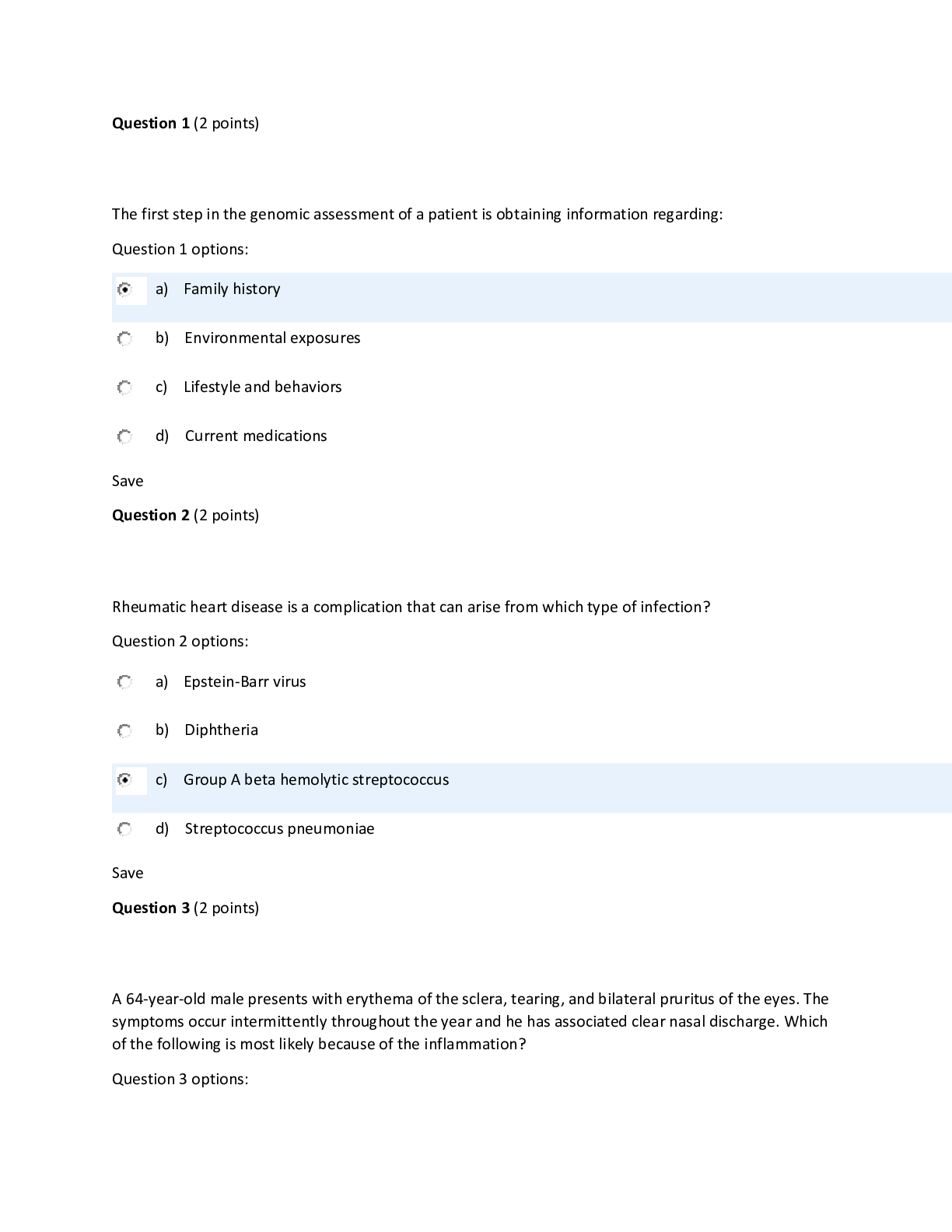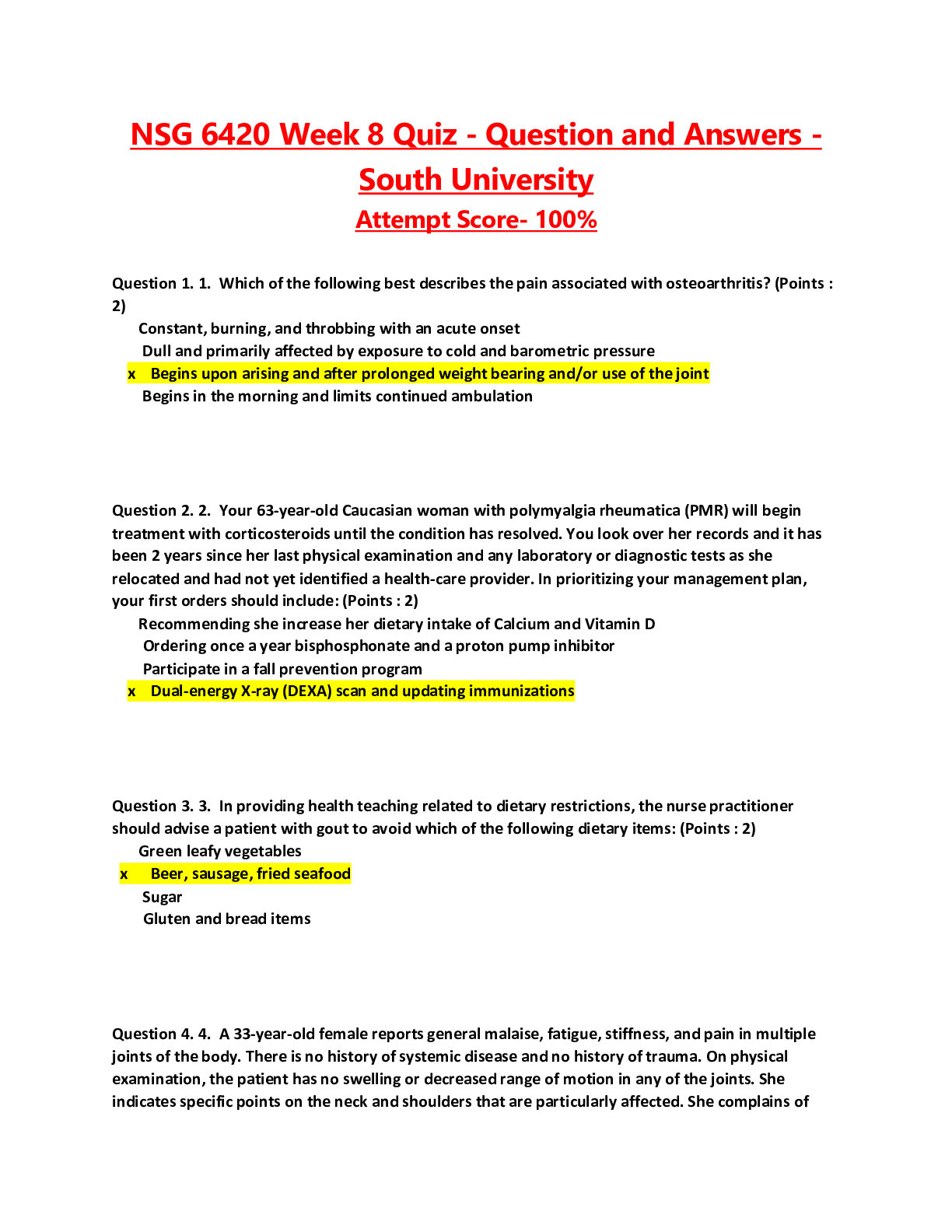*NURSING > EXAM > PORTAGE LEARNING A&P 1 101 FINAL EXAM QUESTION AND ANSWERS LATEST UPDATES A GRADE 100 % VERIFIED. (All)
PORTAGE LEARNING A&P 1 101 FINAL EXAM QUESTION AND ANSWERS LATEST UPDATES A GRADE 100 % VERIFIED.
Document Content and Description Below
PORTAGE LEARNING A&P 1 101 FINAL EXAM QUESTION AND ANSWERS LATEST UPDATES A GRADE 100 % VERIFIED. Question 1 5 / 5 pts List two organs contained in the pelvic cavity. The pelvic cavity cont... ains the bladder, reproductive organs and the rectum Question 2 5 / 5 pts True or False? a. The purpose of cellular respiration is to produce ADP. (T or F) b. Peripheral proteins are found on the outer surface of a cell membrane. (T or F) c. Exocytosis is the process that occurs to bring biomacromolecules inside the cell. (T or F) d. Receptor In your own words, discuss Tay Sachs disease. What organelle within the cell is impacted? What are the symptoms of the disease and why do they occur? (1)Lysosomes (2) buildup of toxic lipids inside the cell (biomacromolecules) (3) disability and death In the genetic disease known as Tay-Sachs, one of the normally present digestive enzymes inside lysosomes is lacking. Thus, a toxic lipid in the brain cells cannot be broken down. The resulting buildup of lipids in these cells can cause intellectual disability and death. Question 4 5 / 5 pts Note: Essay answers must clearly be in your own words. You are observing two cells under the microscope. They are the same type of eukaryotic cell but one appears much larger. Based on appearance alone, which one would you expect to be carrying out respiration at a more active rate, the larger or smaller cell? Explain why. The smaller cell. Cells need to remain relatively small because as a cell expands the amount of surface area relative to the volume of the cell decreases. The smaller cell is more active because relative to its volume, its surface area is larger than a bigger cell. With a larger surface area (relative to its volume) this allows the metabolic processes to occur faster. Question 5 5 / 5 pts Note: Essay answers must clearly be in your own words. Explain what happens to the epiglottis during swallowing. Why? The trachea is closed by the epiglottis. The epiglottis moves inferiorly, covering the trachea. This is to prevent food or liquid from entering the lungs. Question 6 3 / 3 pts Air and food pass in which one of the following areas: Trachea Nasopharynx Correct! Oropharynx Alveoli Question 7 10 / 10 pts Label the following five items from the diagram: Label A __________ Label __________ Label E __________ Label F __________ Label H __________ Your Answer: NASAL CAVITY Label A- Nasal Cavity Label C- Soft Palate/ Uvula Label E- Glottis Label F- Trachea Label H- Tongue Question 8 2 / 2 pts From widest to narrowest, the branches of the bronchial tree are: Correct! Primary bronchi, secondary bronchi, tertiary bronchi, bronchioles Bronchioles, primary bronchi, secondary bronchi, tertiary bronchi Tertiary bronchi, secondary bronchi, primary bronchi, bronchioles Secondary bronchi, tertiary bronchi, primary bronchi, bronchioles Question 9 5 / 5 pts Explain why a patient with liver disease would have intolerance to fatty foods. The liver produces bile which breaks down fats. If it is not producing bile (or less bile), fats will not be broken down effectively. Question 10 5 / 5 pts Look carefully at the diagram below. Label the following 5 organs of the digestive system. To receive credit for the intestines you must label the specific region. 1: ___________ 2: ___________ Answer the following essay question: Describe parietal cells and chief cells: name their location, secretions and purposes. The parietal cells (located in the wall of the stomach body) secrete hydrochloric acid, generating a pH of 1.3-3.5. This very acidic pH kills many of the bacteria ingested along with food. In addition, the low pH stops the activity of salivary amylase. The secretion of hydrochloric acid is essential in the activation of pepsin. Chief cells: secrete pepsinogen. Pepsinogen (a pre-enzyme) is secreted by the chief cells in the stomach. Hydrochloric acid converts the inactive pepsinogen (secreted by the chief cells) into the active enzyme pepsin which begins the breakdown of proteins. Question 12 8 / 10 pts Label the following bones of the skeleton from the figure below: [Show More]
Last updated: 11 months ago
Preview 1 out of pages
Instant download

Buy this document to get the full access instantly
Instant Download Access after purchase
Add to cartInstant download
Reviews( 0 )
Document information
Connected school, study & course
About the document
Uploaded On
Jul 13, 2023
Number of pages
Written in
Additional information
This document has been written for:
Uploaded
Jul 13, 2023
Downloads
0
Views
27

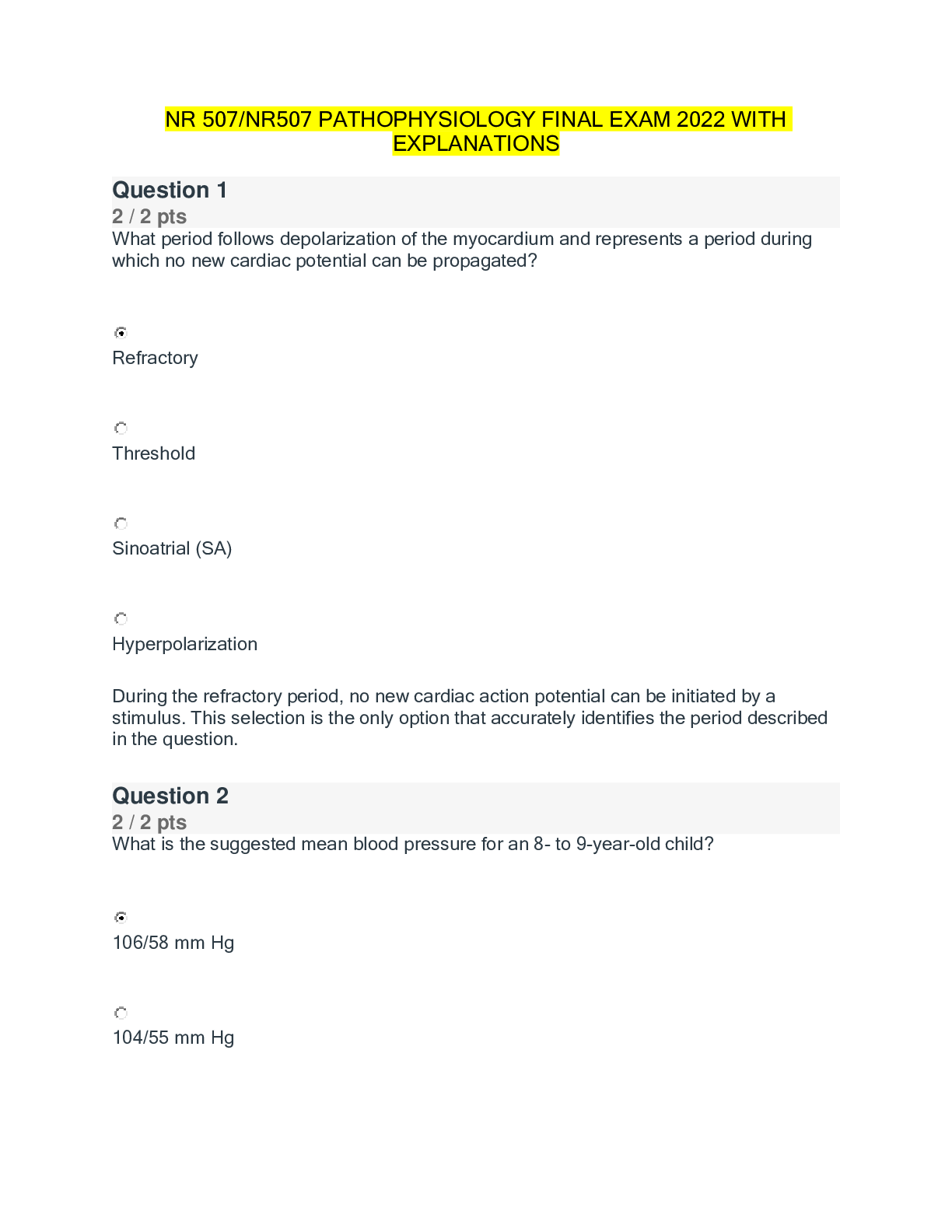
.png)
